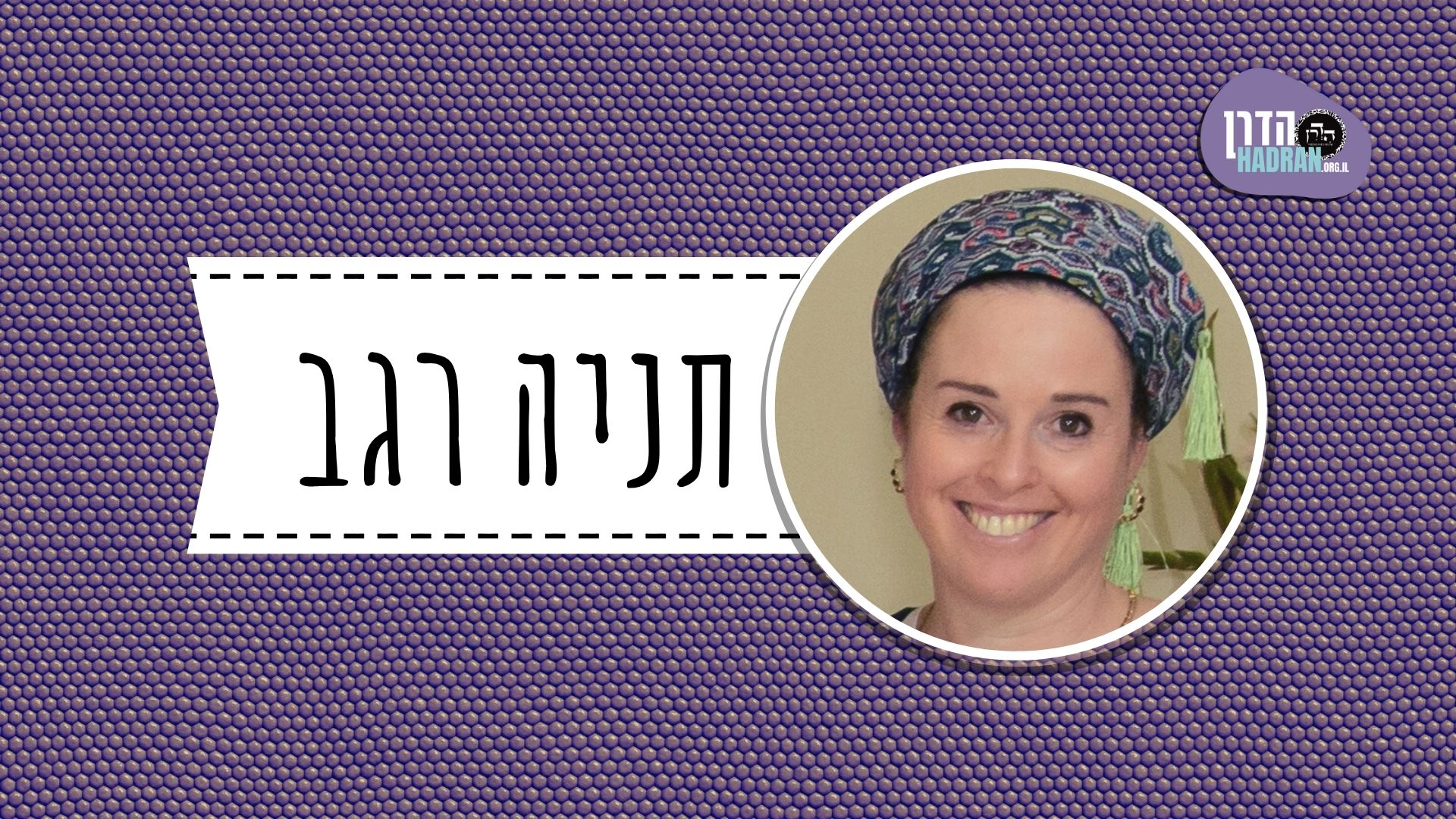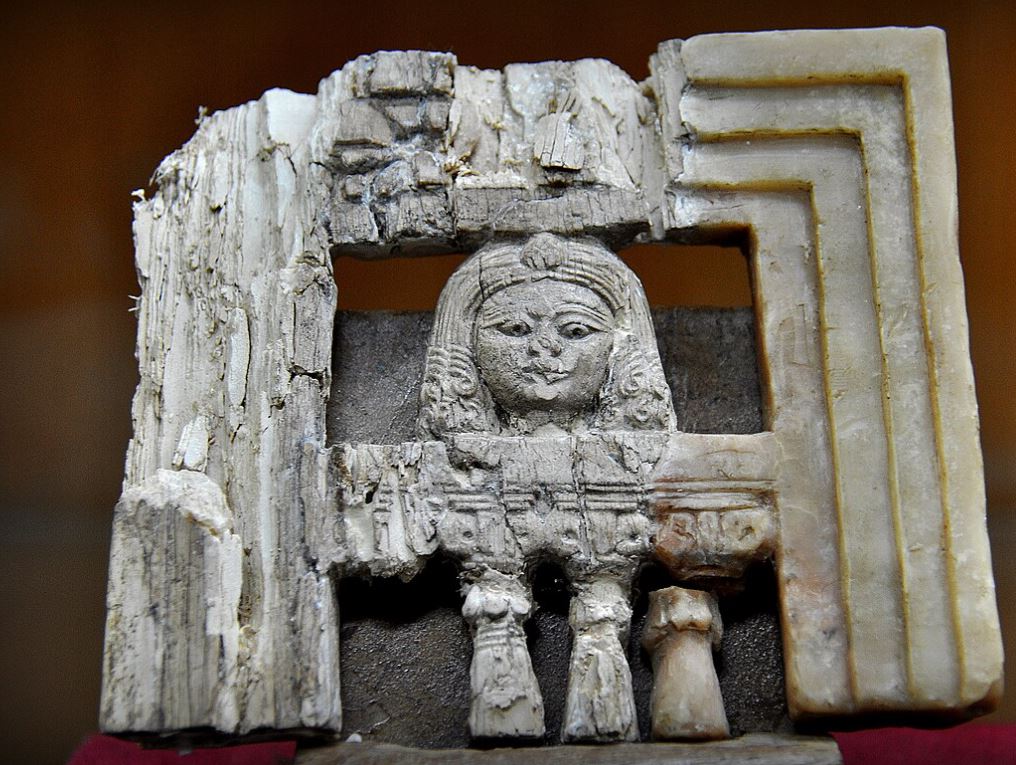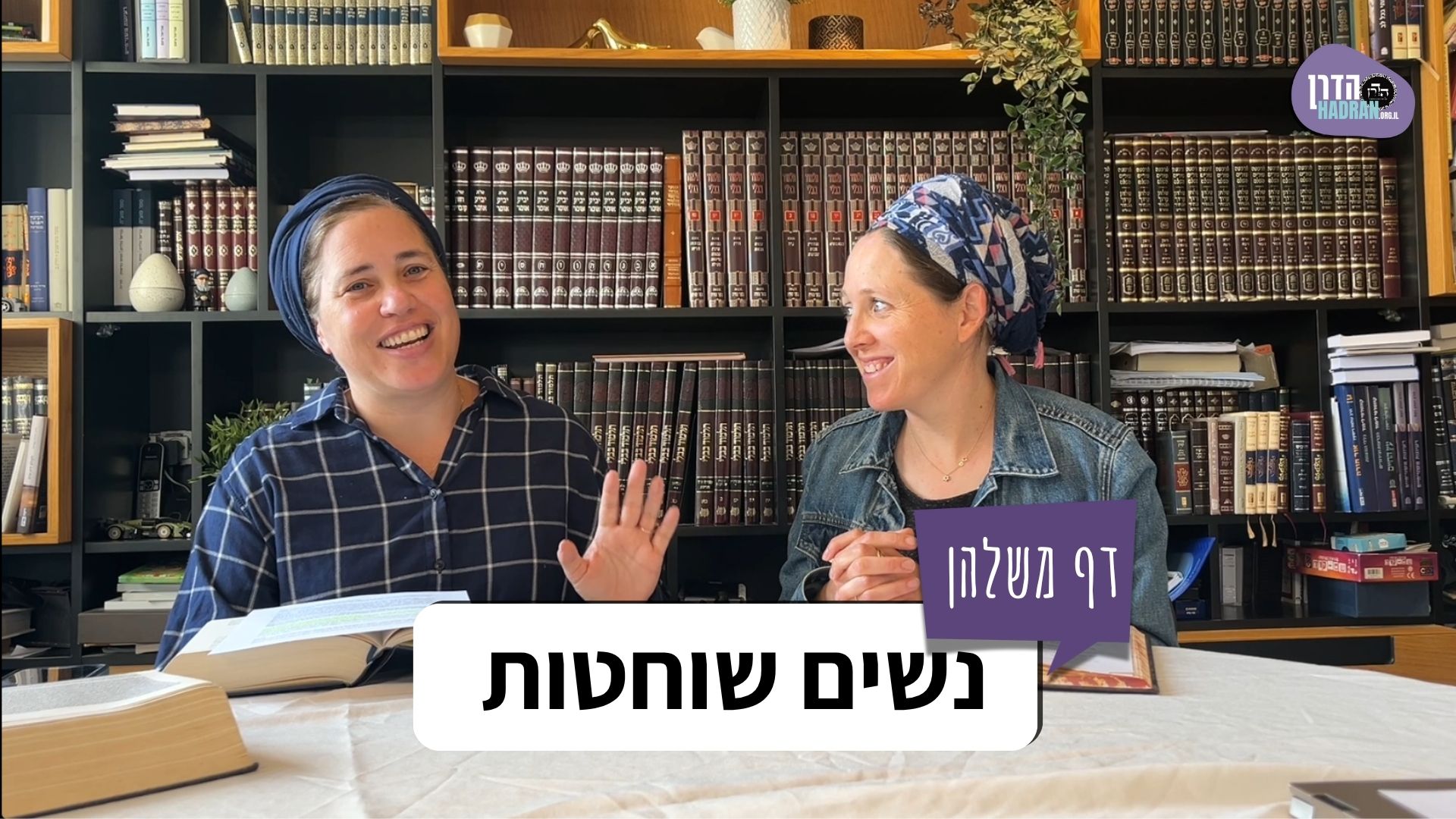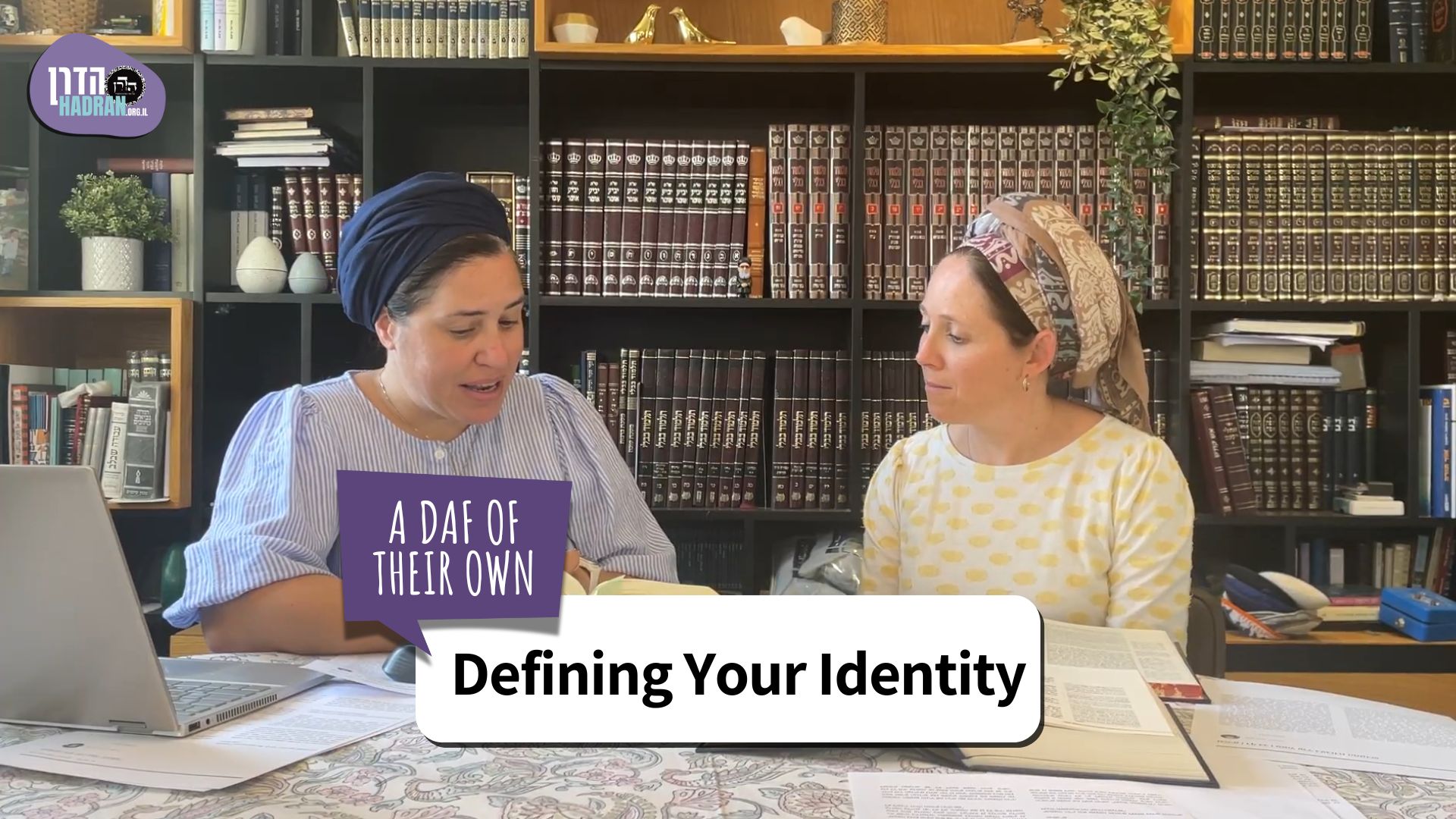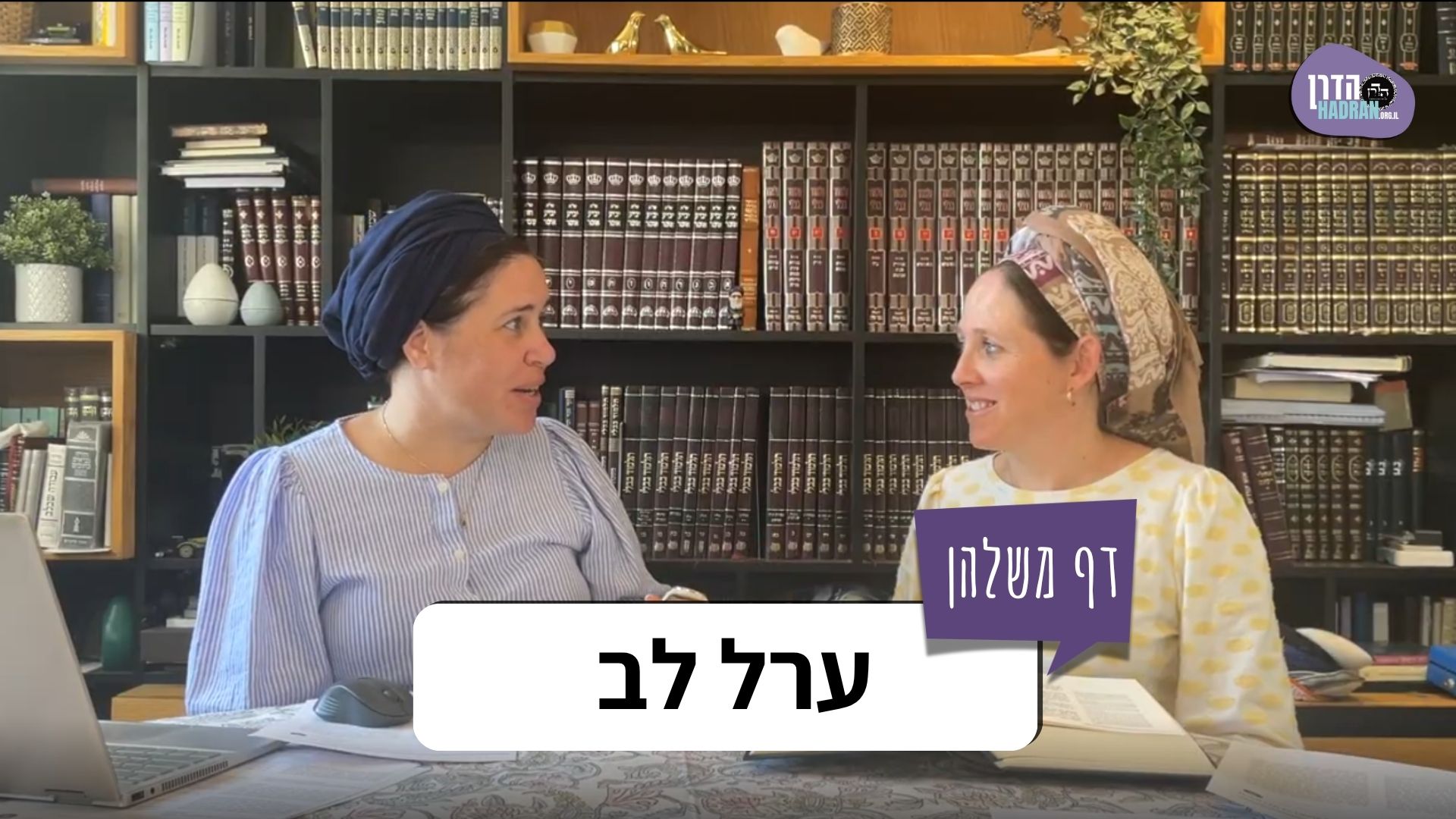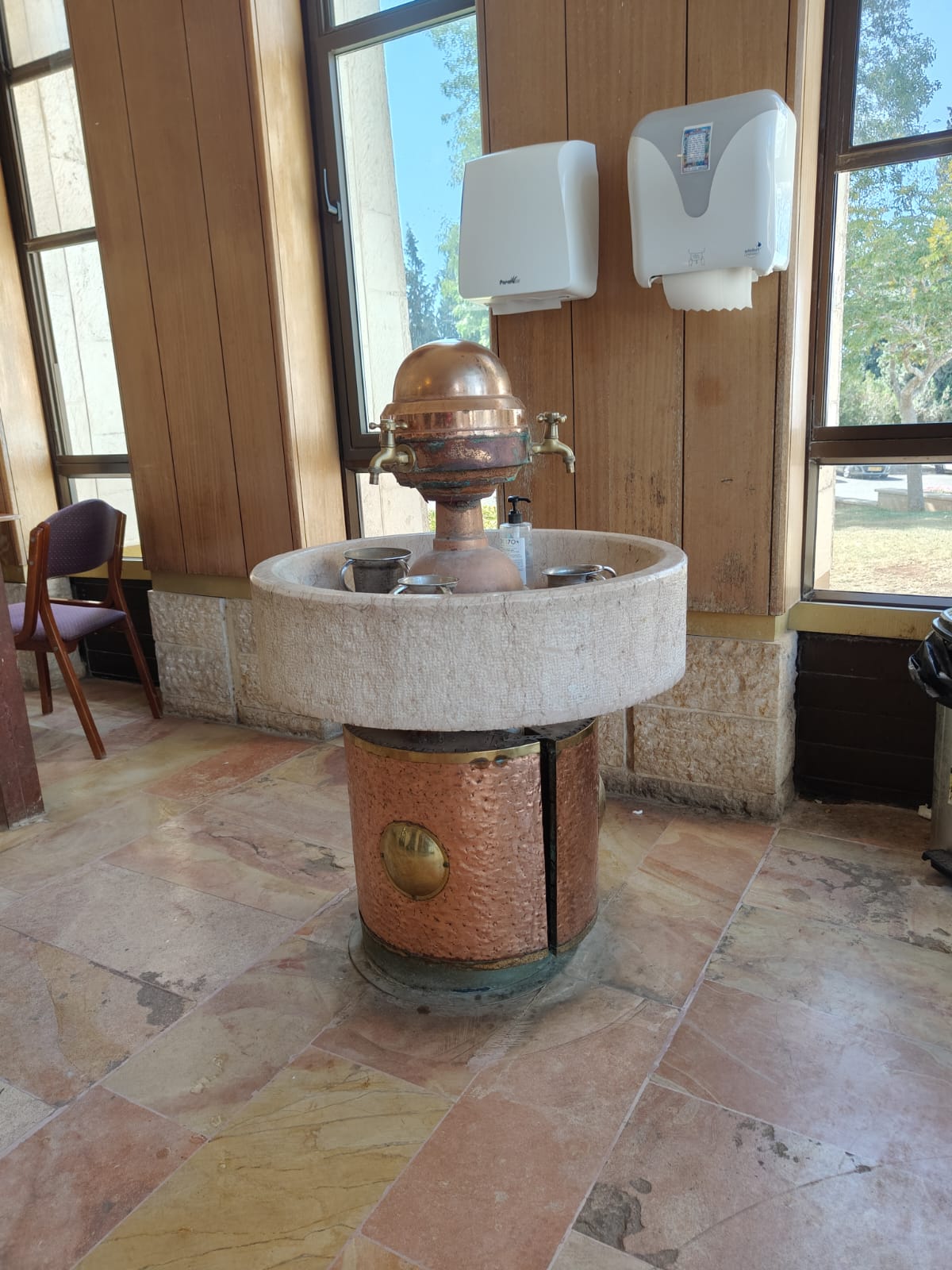There are conflicting traditions about what Rav said regarding a femur that is dislocated in a bird. The gemara in the end paskens based on a story in which it becomes clear what the prevalent custom was.
This month’s learning is sponsored by Beth Balkany in honor of their granddaughter, Devorah Chana Serach Eichel. “May she grow up to be a lifelong learner.”
Want to dedicate learning? Get started here:


This month’s learning is sponsored by Beth Balkany in honor of their granddaughter, Devorah Chana Serach Eichel. “May she grow up to be a lifelong learner.”
Delve Deeper
Broaden your understanding of the topics on this daf with classes and podcasts from top women Talmud scholars.
New to Talmud?
Check out our resources designed to help you navigate a page of Talmud – and study at the pace, level and style that fits you.
The Hadran Women’s Tapestry
Meet the diverse women learning Gemara at Hadran and hear their stories.
Chullin 57
באחוזת עינים אינגיד ואיתנח עול למעייניה וחייטיה לכרסיה:
deceptively, i.e., he only pretended to kill the son. The father fainted and went limp. By this movement, his intestines entered his stomach, and the Roman sewed up his stomach, and he recovered.
נשתברו רגליה: ההוא צנא דאינקורי דאתיא לקמיה דרבא בדקיה רבא בצומת הגידין ואכשריה
§ The mishna states: If its legs were broken, the bird remains kosher. The Gemara relates that there was a certain basket of birds with broken legs that came before Rava. Rava inspected each bird at the convergence of sinews in the thigh, and when he found that all its sinews were intact, he deemed it kosher.
אמר רב יהודה אמר רב שמוטת יד בבהמה כשרה (שמוטת ירך בבהמה טרפה) שמוטת ירך בעוף טרפה שמוטת גף בעוף טרפה חיישינן שמא ניקבה הריאה ושמואל אמר תיבדק וכן אמר ר’ יוחנן תיבדק
Rav Yehuda says that Rav says: A dislocated foreleg in an animal is kosher. A dislocated femur in an animal renders it a tereifa. A dislocated femur in a bird renders it a tereifa. A dislocated wing in a bird renders it a tereifa, because we must be concerned that perhaps the lung was perforated. The lung is located near the wing’s attachment to the body, and part of the lung may have been torn out with the wing. And Shmuel says: The lung should be inspected, and if no damage is found, the bird is kosher. And so says Rabbi Yoḥanan: It should be inspected.
חזקיה אמר אין ריאה לעוף ור’ יוחנן אמר יש לו וישנה כעלה של וורד בין אגפים מאי אין ריאה לעוף אילימא דלית ליה כלל והא קא חזינא דאית ליה אלא דלא מיטריף ביה והתני לוי טרפות שמנו חכמים בבהמה כנגדן בעוף יתר עליהן עוף נשבר העצם אע”פ שלא ניקב קרום של מוח
Ḥizkiyya, son of Rabbi Ḥiyya, says: A bird has no lungs. And Rabbi Yoḥanan says: A bird does have lungs, and they are like a rose petal in appearance, thin and red, between the wings. The Gemara asks: What does Ḥizkiyya mean when he says that a bird has no lungs? If we say that it has no lungs at all, that is problematic, as don’t we see that it does have lungs? Rather, say that he means that the bird is not rendered a tereifa by them if they are perforated. But this, too, is problematic, as doesn’t Levi teach: Those tereifot that the Sages enumerated in an animal hold likewise in a bird, and in addition to those, a bird is a tereifa if the bone of the skull was broken, even if the membrane of the brain was not perforated? If so, a perforated lung in a bird, as in an animal, renders it a tereifa.
אלא אין לו לא לינפל ולא ליחמר מ”ט אמר רב חנה הואיל ורוב צלעותיה מגינות עליה
Rather, say that Ḥizkiyya means that a bird’s lung has no halakha of falling and no halakha of singeing. If a bird falls, one need not inspect the lungs for damage as he must other organs (see 51b), and if it falls in a fire, one need not inspect the lungs for a change in color as he must other organs (see 56b). What is the reason for this? Rav Ḥana said: Since a majority of the bird’s ribs protect the lungs, one need not be concerned that the lung was damaged.
והא מדא”ר יוחנן יש לו וישנה כעלה של וורד בין אגפיים מכלל דחזקיה סבר דלית ליה אלא אמרי במערבא משמיה דר’ יוסי ברבי חנינא מדבריו של בריבי ניכר שאינו בקי בתרנגולין
The Gemara asks: But from the fact that Rabbi Yoḥanan says in response: A bird does have lungs, and they are like a rose petal between the wings, by inference one must conclude that Ḥizkiyya maintains that it has no lungs at all. Rather, one must say as they say in the West, Eretz Yisrael, in the name of Rabbi Yosei, son of Rabbi Ḥanina: From the statement of the Distinguished, i.e., Ḥizkiyya, it is apparent that he is unfamiliar with chickens.
אמר רב הונא אמר רב שמוטת ירך בעוף כשרה א”ל רבה בר רב הונא לרב הונא והא רבנן דאתו מפומבדיתא אמרו רב יהודה משמיה דרב אמר שמוטת ירך בעוף טרפה אמר ליה ברי נהרא נהרא ופשטיה
§ Rav Huna said that Rav said: A dislocated femur in a bird is kosher. Rabba bar Rav Huna said to Rav Huna: But the Rabbis that came from Pumbedita said that Rav Yehuda says in the name of Rav: A dislocated femur in a bird renders it a tereifa. Rav Huna said to him: My son, each river and its course, i.e., different communities observe different customs. Although Rav himself held that such a bird is kosher, he ruled for those living in Pumbedita that such a bird is a tereifa, in accordance with their own custom.
אזל רבי אבא אשכחיה לרב ירמיה בר אבא דקא בדיק בצומת הגידין אמר ליה למה ליה למר כולי האי והא רב הונא אמר רב שמוטת ירך בעוף כשרה אמר ליה אנא מתניתין ידענא בהמה שנחתכו רגליה מן הארכובה ולמטה כשרה מן הארכובה ולמעלה פסולה וכן שניטל צומת הגידין ואמר רב עלה וכן בעוף
The Gemara recounts: Rabbi Abba went and found Rav Yirmeya bar Abba inspecting birds at the convergence of sinews in the thigh. Rabbi Abba said to him: Why must Master do all this? But doesn’t Rav Huna say that Rav says: A dislocated femur in a bird is kosher? If a bird is kosher even when the whole thigh has been removed, all the more so it should be kosher when only the convergence of sinews has been removed. Rav Yirmeya bar Abba said to him: I know the mishna (76a): With regard to an animal whose hind legs were severed, if they were severed from the leg joint and below, it is kosher; from the leg joint and above, it is a tereifa and unfit for consumption. And likewise an animal whose convergence of sinews in the thigh was removed is a tereifa. And Rav said about this: And likewise with regard to a bird.
אי הכי קשיא דרב אדרב אישתיק אמר ליה דלמא שני לה בין שמוטה לחתוכה א”ל ואת מפרשת שמעתתיה דרב בפירוש אמר רב שמוטה כשר’ חתוכה פסולה ואל תתמה שהרי חותכה מכאן ומתה חותכה מכאן וחיתה
Rabbi Abba responded: If so, this statement of Rav, that a bird whose convergence of sinews was removed is a tereifa, poses a difficulty for that statement of Rav, that a bird with a dislocated femur is kosher. Rav Yirmeya bar Abba was silent and did not respond. Rabbi Abba said to him: Perhaps there is a difference for Rav between a dislocated femur and a severed femur, and while the former does not render a bird a tereifa, the latter does. Rav Yirmeya bar Abba said to him: And are you interpreting Rav’s halakhot based on your own reasoning? Rav said explicitly: A dislocated femur is kosher, while a severed femur renders the animal unfit for consumption. And do not be confounded by this distinction, as one cuts an animal from here, in one place, and it dies, but one cuts it from there, in another place, and it lives.
כי סליק ר’ אבא אשכחיה לרבי זירא דיתיב וקאמר אמר רב הונא אמר רב שמוטת ירך בעוף טרפה אמר ליה חיי דמר מיומא דסליק מר להכא
The Gemara recounts: When Rabbi Abba went up from Babylonia to Eretz Yisrael, he found Rabbi Zeira sitting and saying: Rav Huna said that Rav said that a dislocated femur in a bird renders it a tereifa. Rabbi Abba said to him: By Master’s life, since the day that Master came up to here, Eretz Yisrael,
הוה לן פתחון פה קמיה דרב הונא ושאילניה ואמר לן שמוטת ירך בעוף כשירה
we had the opportunity to speak with Rav Huna, and we asked him about this matter, and he said to us: A dislocated femur in a bird is kosher.
ואשכחתיה נמי לרבי ירמיה בר אבא דיתיב וקא בדיק בצומת הגידין ואקשי ליה לא סבר לה מר הא דאמר רב הונא אמר רב שמוטת ירך בעוף כשרה א”ל אנא מתניתין ידענא בהמה שנחתכו רגליה מן הארכובה ולמטה כשרה מן הארכובה ולמעלה פסולה וכן שניטל צומת הגידין ואמר רב עלה וכן בעוף
And I also found Rabbi Yirmeya bar Abba sitting and inspecting birds at the convergence of sinews in the thigh. And I posed a difficulty to him: Doesn’t Master maintain in accordance with this statement that Rav Huna says that Rav says: A dislocated femur in a bird is kosher? Rabbi Yirmeya bar Abba said to me: I know the mishna (76a): With regard to an animal whose hind legs were severed, if they were severed from the leg joint and below, it is kosher; from the leg joint and above, it is a tereifa and unfit for consumption. And likewise an animal whose convergence of sinews in the thigh was removed is a tereifa. And Rav said about this: And likewise with regard to a bird.
ואמרי ליה אי הכי קשיא דרב אדרב אישתיק ואקשי ליה ודלמא שני ליה לרב בין שמוטה לחתוכה ואמר לי ואת מפרשת שמעתיה דרב בפירוש אמר רב שמוטה כשרה חתוכה פסולה
And I said to him: If so, this statement of Rav poses a difficulty for that statement of Rav. Rabbi Yirmeya bar Abba was silent. And I challenged him: But perhaps there is a difference for Rav between a dislocated femur and a severed one. And he said to me: And are you interpreting Rav’s halakha based on your own reasoning? Rav said explicitly: A dislocated femur is kosher, while a severed femur renders the animal unfit for consumption.
ואת מה בידך הכי אמר רב חייא בר אשי אמר רב שמוטת ירך בעוף טרפה וכן אמר ר’ יעקב בר אידי א”ר יוחנן שמוטת ירך בעוף טרפה
Rabbi Abba then asked Rabbi Zeira: And as for you, what is in your hand? What have you heard with regard to this halakha? Rabbi Zeira said to him: This is what Rav Ḥiyya bar Ashi says that Rav says: A dislocated femur in a bird renders it a tereifa. And so said Rabbi Ya’akov bar Idi that Rabbi Yoḥanan said: A dislocated femur in a bird renders it a tereifa.
ואמר ר’ יעקב בר אידי אילמלי הוה רבי יוחנן באתרא דאורו בה חברוותא להתירא לא פרכיס דאמר רבי חנינא אמר רבי שמוטת ירך בעוף כשרה ותרנגולת היתה לו לרבי חנינא שנשמטה ירך שלה והביאה לפני רבי והתירה לו ומלחה רבי חנינא והוה מורי בה הלכה לתלמידים זה התיר לי רבי זה התיר לי רבי
And with regard to this, Rabbi Ya’akov bar Idi said: If Rabbi Yoḥanan had been in the place where the assembly ruled to permit such a bird, he would not have stirred. In other words, he would not have contested their ruling, because they were the greatest Sages of the previous generation. As Rabbi Ḥanina says that Rabbi Yehuda HaNasi says: A dislocated femur in a bird is kosher. And Rabbi Ḥanina had a hen whose femur was dislocated, and he brought it before Rabbi Yehuda HaNasi, and Rabbi Yehuda HaNasi permitted it to him, and Rabbi Ḥanina salted the hen to preserve it. And he would teach the students the halakha with it, as he would show them the preserved body of the hen and say: Rabbi Yehuda HaNasi permitted this to me, Rabbi Yehuda HaNasi permitted this to me.
ולית הלכתא ככל הני שמעתתא אלא כי הא דשאל רבי יוסי בן נהוראי את ר’ יהושע בן לוי קדירת קנה בכמה אמר לו משנה שלמה שנינו עד כאיסר האיטלקי אמר לו והלא רחל אחת היתה בשכונתנו שנקדר קנה שלה ועשו לה קרומין של קנה וחיתה
The Gemara concludes: But the halakha is not in accordance with any of these statements. Rather, it is in accordance with that which Rabbi Yosei ben Nehorai asked Rabbi Yehoshua ben Levi: In what amount must a windpipe be punctured to render the animal a tereifa? Rabbi Yehoshua ben Levi said to him: We learned a full mishna (54a): Until the perforation is the same size as the Italian issar. Rabbi Yosei ben Nehorai said to him: But wasn’t there a certain ewe in our neighborhood whose windpipe was punctured in a greater amount, and they made a seal for the windpipe out of the shell of a reed and it lived?
אמר לו ועל דא את סמיך והלא הלכה רווחת בישראל שמוטת ירך בעוף טרפה ותרנגולת היתה לו לרבי שמעון בן חלפתא שנשמטה ירך שלה ועשו לה שפופרת של קנה וחיתה אלא מאי אית לך למימר תוך י”ב חדש הוה הכא נמי תוך י”ב חדש הוה
Rabbi Yehoshua ben Levi said to him: And do you rely on this incident as evidence? But isn’t it a widespread halakha among the Jewish people that a dislocated femur in a bird renders it a tereifa? And still, Rabbi Shimon ben Ḥalafta had a hen whose femur was dislocated, and they made it a support out of the tube of a reed and it lived. Rather, what have you to say about this case? It must have occurred within twelve months of the dislocation, and afterward the hen died, since no tereifa can live more than twelve months. Here, too, in the case of the punctured windpipe, the episode occurred within twelve months of the injury and the ewe later died.
אמרו עליו על רבי שמעון בן חלפתא שעסקן בדברים היה והיה עושה דבר להוציא מלבו של רבי יהודה שהיה רבי יהודה אומר אם ניטלה הנוצה פסולה ותרנגולת היתה לו לרבי שמעון בן חלפתא שניטלה נוצה שלה והניחה בתנור וטלה עליה במטלית של טרסיים וגידלה כנפיים האחרונים יותר מן הראשונים
§ They said about Rabbi Shimon ben Ḥalafta that he was a researcher of various matters, and he would act to counter the opinion of Rabbi Yehuda, as Rabbi Yehuda would say: If the down covering a bird’s body was removed, it is a tereifa and unfit for consumption, as stated in the mishna. And Rabbi Shimon ben Ḥalafta had a hen whose down was removed, and he placed it in an oven, a warm place, and he covered it with a Coppersmiths’ [tarsiyyim] apron, and its new, i.e., rehabilitated, wings grew even more feathers than the original wings.
ודלמא קסבר רבי יהודה טרפה משבחת אם כן במידי דמיטרפא בה הגדילה כנפיים האחרונים יותר מן הראשונים
The Gemara asks: But how does this counter Rabbi Yehuda’s opinion? Perhaps Rabbi Yehuda holds that a tereifa can live and that its health can even improve beyond its previous state. The Gemara responds: Even if this is so, would Rabbi Yehuda say so with regard to the very thing with which it was rendered a tereifa, as is the case here, where it grew new wings with more feathers than the original wings?
מאי עסקן בדברים א”ר משרשיא דכתיב (משלי ו, ו) לך אל נמלה עצל ראה דרכיה וחכם אשר אין לה קצין שוטר ומושל תכין בקיץ לחמה אמר איזיל איחזי אי ודאי הוא דלית להו מלכא
The Gemara asks: From what episode did Rabbi Shimon ben Ḥalafta earn the title: Researcher of matters? Rav Mesharshiyya said: He saw that it is written: “Go to the ant, you sluggard; consider her ways, and be wise; which having no chief, overseer, or ruler, provides her bread in the summer” (Proverbs 6:6–8). Rabbi Shimon ben Ḥalafta said: I will go and see if it is correct that they have no king.
אזל בתקופת תמוז פרסיה לגלימיה אקינא דשומשמני נפק אתא חד מינייהו אתנח ביה סימנא על אמר להו נפל טולא נפקו ואתו דלייה לגלימיה נפל שמשא נפלו עליה וקטליה אמר שמע מינה לית להו מלכא דאי אית להו הרמנא דמלכא לא ליבעו
He went in the season of Tammuz, i.e., summer. Knowing that ants avoid intense heat, he spread his cloak over an ant hole to provide shade. One of the ants came out and saw the shade. Rabbi Shimon placed a distinguishing mark on the ant. It went into the hole and said to the other ants: Shade has fallen. They all came out to work. Rabbi Shimon lifted up his cloak, and the sun fell on them. They all fell upon the first ant and killed it. He said: One may learn from their actions that they have no king; as, if they had a king, would they not need the king’s edict [harmana] to execute their fellow ant?
א”ל רב אחא בריה דרבא לרב אשי ודלמא מלכא הוה בהדייהו א”נ הרמנא דמלכא הוו נקיטי אי נמי בין מלכא למלכא הוה דכתיב (שופטים יז, ו) בימים ההם אין מלך בישראל איש הישר בעיניו יעשה אלא סמוך אהימנותא דשלמה
Rav Aḥa, son of Rava, said to Rav Ashi: But perhaps the king was with them at the time and gave them permission. Or perhaps they already possessed the king’s edict giving them license to kill the ant. Or perhaps it was an interregnum between kings, as it is written: “In those days there was no king in Israel; every man did that which was right in his own eyes” (Judges 17:6). Rather, rely on the credibility of Solomon, the author of Proverbs, that ants have no king.
אמר רב הונא סימן לטרפה י”ב חדש מיתיבי סימן לטרפה כל שאינה יולדת רשב”ג אומר משבחת והולכת בידוע שהיא כשרה מתנוונה והולכת בידוע שהיא טרפה רבי אומר סימן לטרפה שלשים יום אמרו לו והלא הרבה מתקיימות שתים שלש שנים
§ Rav Huna says: The sign of a tereifa is twelve months. If it is uncertain whether an animal is a tereifa, one may wait twelve months; if the animal survives, it is kosher. The Gemara raises an objection from a baraita: The sign of a tereifa is any animal that cannot give birth. Rabban Shimon ben Gamliel says: If its health improves continuously, it is certainly kosher; if its health deteriorates continuously, it is certainly a tereifa. Rabbi Yehuda HaNasi says: The sign of a tereifa is any animal that does not survive thirty days. The Sages said to him: But don’t many animals that are certainly tereifot survive two or three years? None of the opinions cited in the baraita accord with Rav Huna’s statement.
תנאי היא דתניא ובגלגלת (עד) שיש בה נקב אחד ארוך אפילו נקבים הרבה מצטרפים למלא מקדח א”ר יוסי בן המשולם מעשה בענבול באחד שנפחתה גלגלתו ועשו לו חידוק של קרויה וחיה אמר לו ר’ שמעון בן אלעזר משם ראיה ימות החמה היה וכיון שעברו עליו ימות הצנה מיד מת
The Gemara responds: The matter is a dispute between tanna’im, as it is taught in a baraita: And in a skull that contains one long hole, or even if it has many holes, the areas of the holes join together to constitute the size of a drill hole, and they render the animal a tereifa. Rabbi Yosei ben HaMeshullam said: There was an incident in a place called Inbul involving one whose skull was missing a piece, and they made for him a patch out of the shell of a gourd, and he survived. Therefore, an animal with a missing piece of skull cannot be a tereifa. Rabbi Shimon ben Elazar said to him: Can you bring proof from there? It was summer then, and once winter came upon him he died immediately. Rabbi Shimon ben Elazar holds that an animal is a tereifa if it does not survive through summer and winter, i.e., one year. Rav Huna’s statement accords with this opinion.
אמר רב אחא בר יעקב הלכה טרפה יולדת ומשבחת אמר אמימר הני ביעי דטרפה
Rav Aḥa bar Ya’akov says: The halakha is that a tereifa can give birth and its health can even improve. If the animal appears to recover or gives birth, this does not prove it is not a tereifa. Ameimar says: With regard to these eggs of a tereifa bird,



